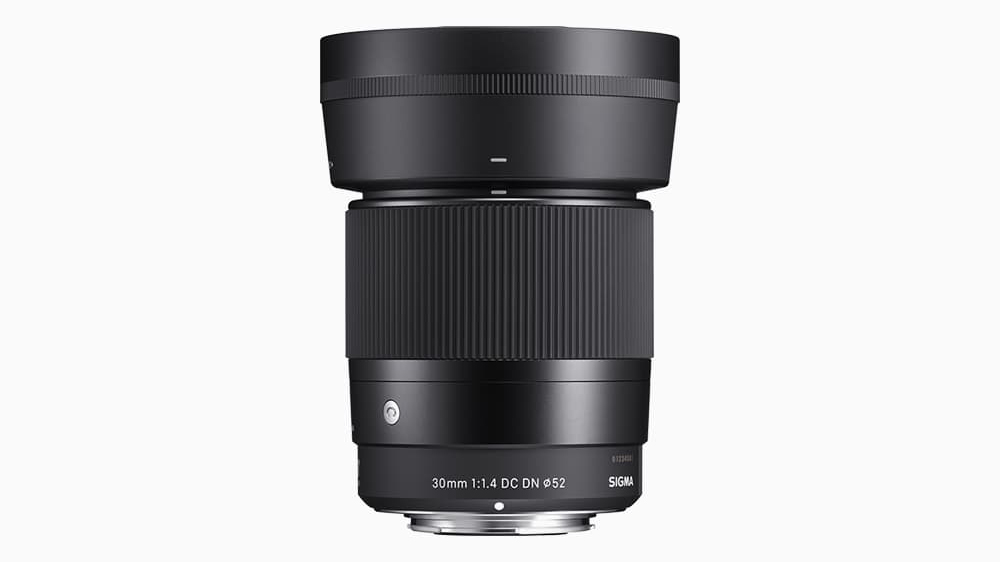Sigma's new lenses for Nikon Z cameras are bad news for Canon
Nikon Z Mount gets huge boost as lens maker Sigma joins

Sigma has announced its trio of existing and highly regarded DC DN Contemporary F1.4 prime lenses; the 16mm F1.4, 30mm F1.4 and 56mm F1.4, are coming to the Nikon Z mount – and it's another swipe at Canon's seemingly closed RF-mount system.
Already available in Sony E, Canon EF-M, Fujifilm X, Micro Four Thirds and L-mount, these will be Sigma's first lenses for Nikon mirrorless cameras, being designed for APS-C cameras like the Nikon Zfc, Nikon Z30 and Nikon Z50.
Sigma has shared a press release about its three new lenses where further details can be found.

There is currently no launch date for these three new lenses, nor word of other possible Sigma-made Nikon Z lenses in the future – including full-frame offerings – although Sigma describes these DC DN Contemporary lenses as the ‘first’ it will make for the Nikon Z mount.
Sigma has a long history of excellent quality lenses at competitive price points and the news will be music to the ears of Nikon APS-C mirrorless users for whom lens options are really rather limited.
Regarding price, again there is no public information, although we can draw from existing prices of these lenses that are available in five other mounts to get a rough idea. The street prices for the lenses vary depending on the lens mount, but for the 16mm F1.4 are approximately £360 / $450 / AU$630; the 30mm F1.4 costs around £290 / $340 / AU$500, while the 56mm F1.4 is roughly £380 / $475 / AU$670.

Analysis: Advantage Nikon for APS-C cameras
New APS-C lenses are great news for Nikon Zfc, Z30 and Z50 users. Currently there are only three Nikon-made autofocus zoom lenses available in this format, the 16-50mm f/3.5-6.3 DX VR, 18-140mm f/3.5-6.3 DX VR and 50-250mm f/4.5-5.6 DX VR, and no prime lenses.
Sign up for breaking news, reviews, opinion, top tech deals, and more.
Now there is the prospect of three highly regarded, lightweight and compact autofocus prime lenses. The APS-C sensor crop factor means the lenses have an effective focal length of 24mm, 45mm and 85mm respectively.
That wide angle lens of the trio is synonymous with landscape photography, while the other two are particularly popular with portrait photographers, especially with the maximum F1.4 aperture. It's an enticing pairing especially with the stylish Nikon Zfc.

The news is also a blow to those that own or are interested in the Canon EOS R7, R10 and R50 cameras – Canon’s lineup of mirrorless RF-mount cameras, also with APS-C sensor.
Like Nikon, there are only three budget-level zoom lenses available for the R7, R10 and R50 cameras, yet Canon persists in blocking third party lens makers, so the wait goes on for new Canon RF lenses. For a highly competent camera like the EOS R7 especially, the limited lens choice is its achilles heel, so for now, it seems Nikon has stolen a march over its historic rival.

Tim is the Cameras editor at TechRadar. He has enjoyed more than 15 years in the photo video industry with most of those in the world of tech journalism. During his time as Deputy Technical Editor with Amateur Photographer, as a freelancer and consequently editor at Tech Radar, Tim has developed a deeply technical knowledge and practical experience with cameras, educating others through news, reviews and features. He’s also worked in video production for Studio 44 with clients including Canon, and volunteers his spare time to consult a non-profit, diverse stories team based in Nairobi. Tim is curious, a keen creative, avid footballer and runner, and moderate flat white drinker who has lived in Kenya and believes we have much to enjoy and learn from each other.